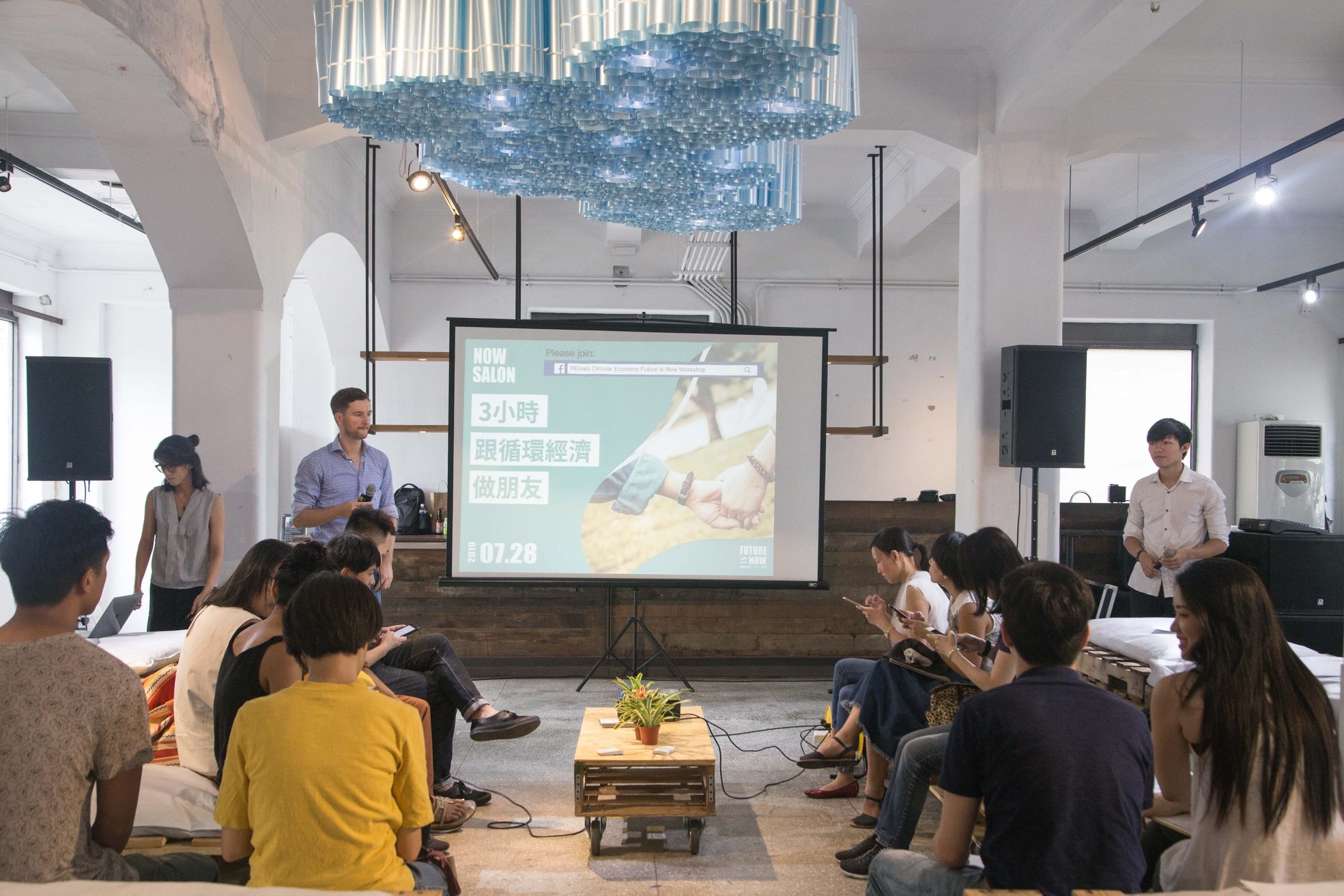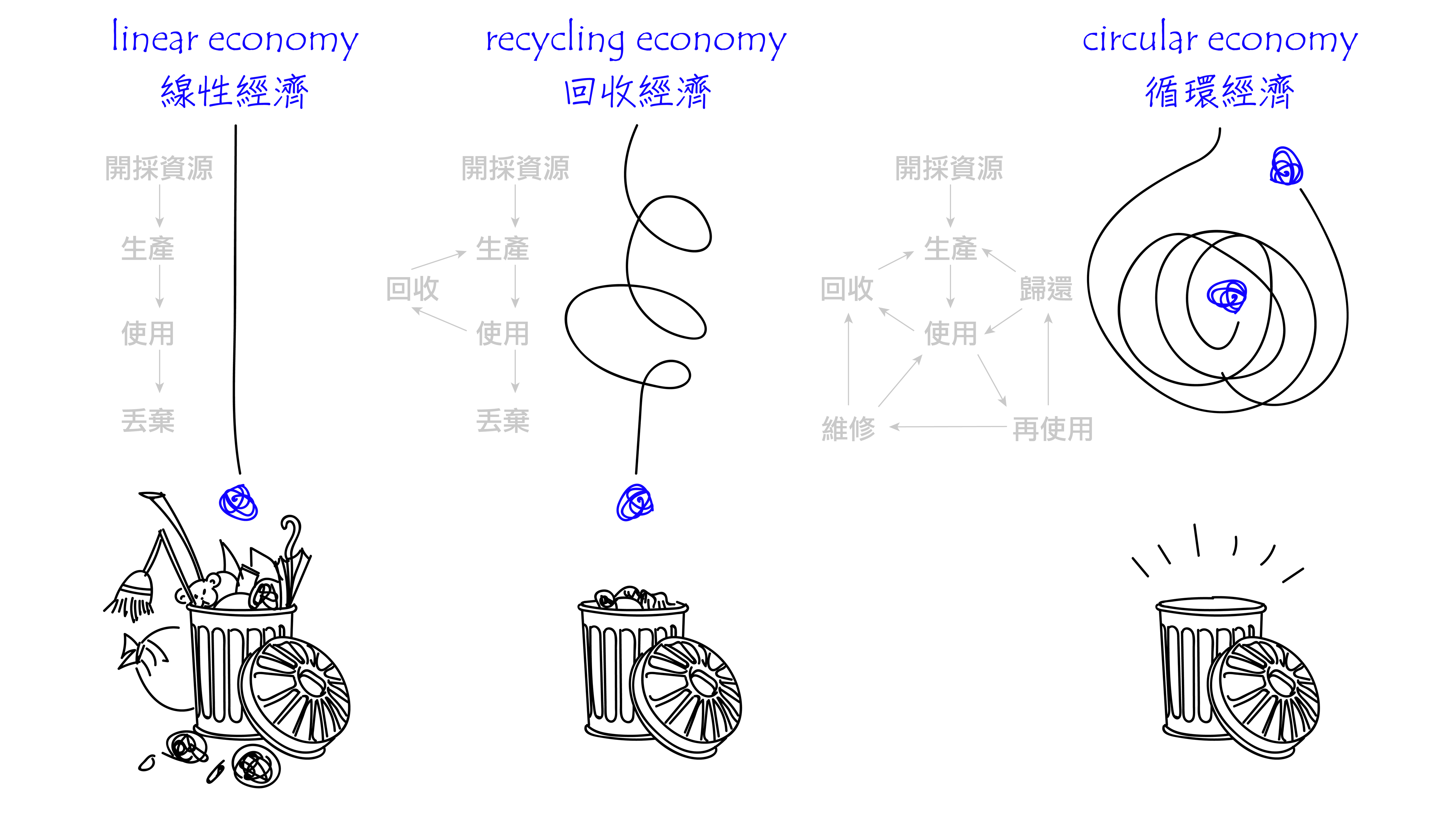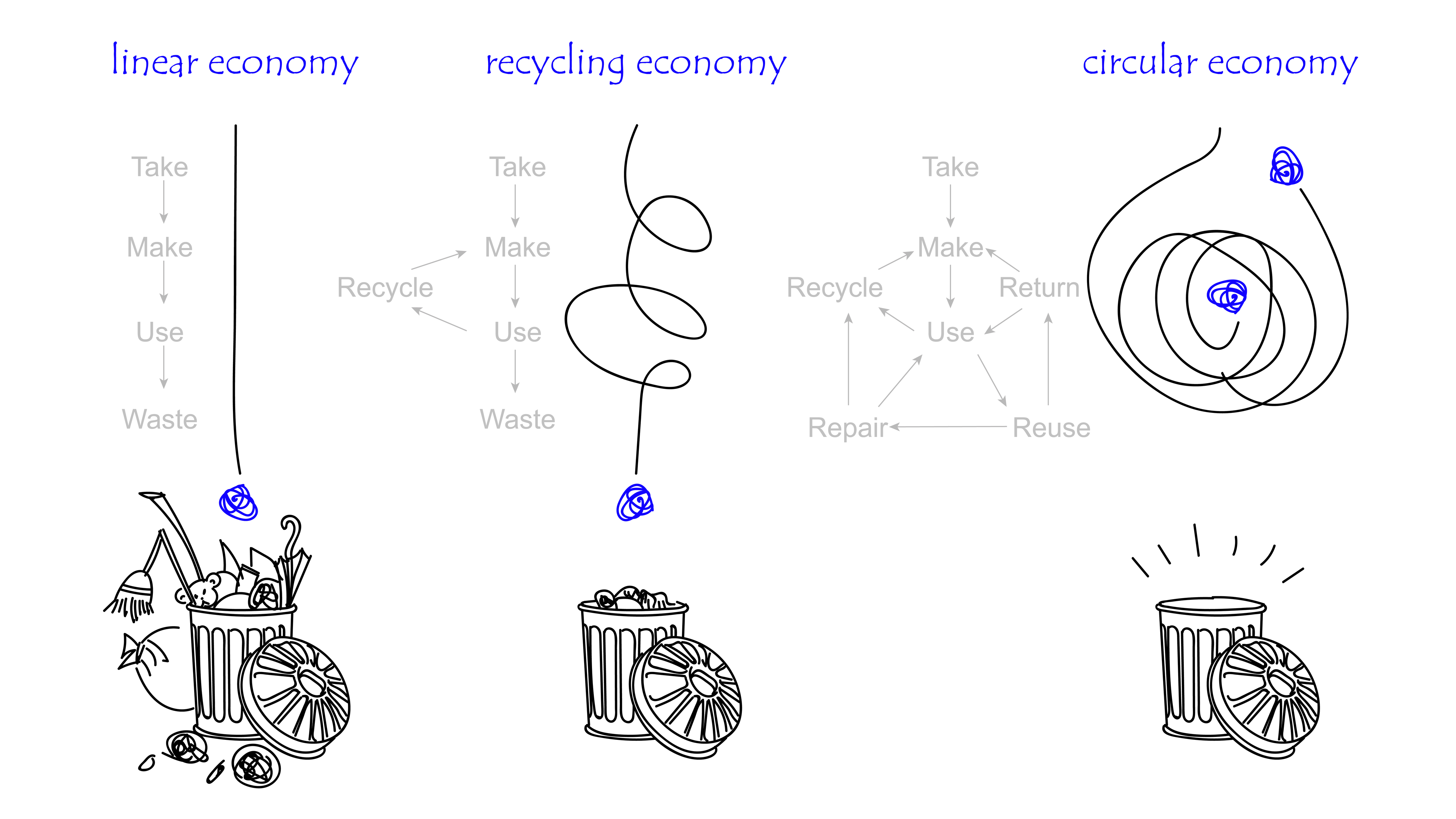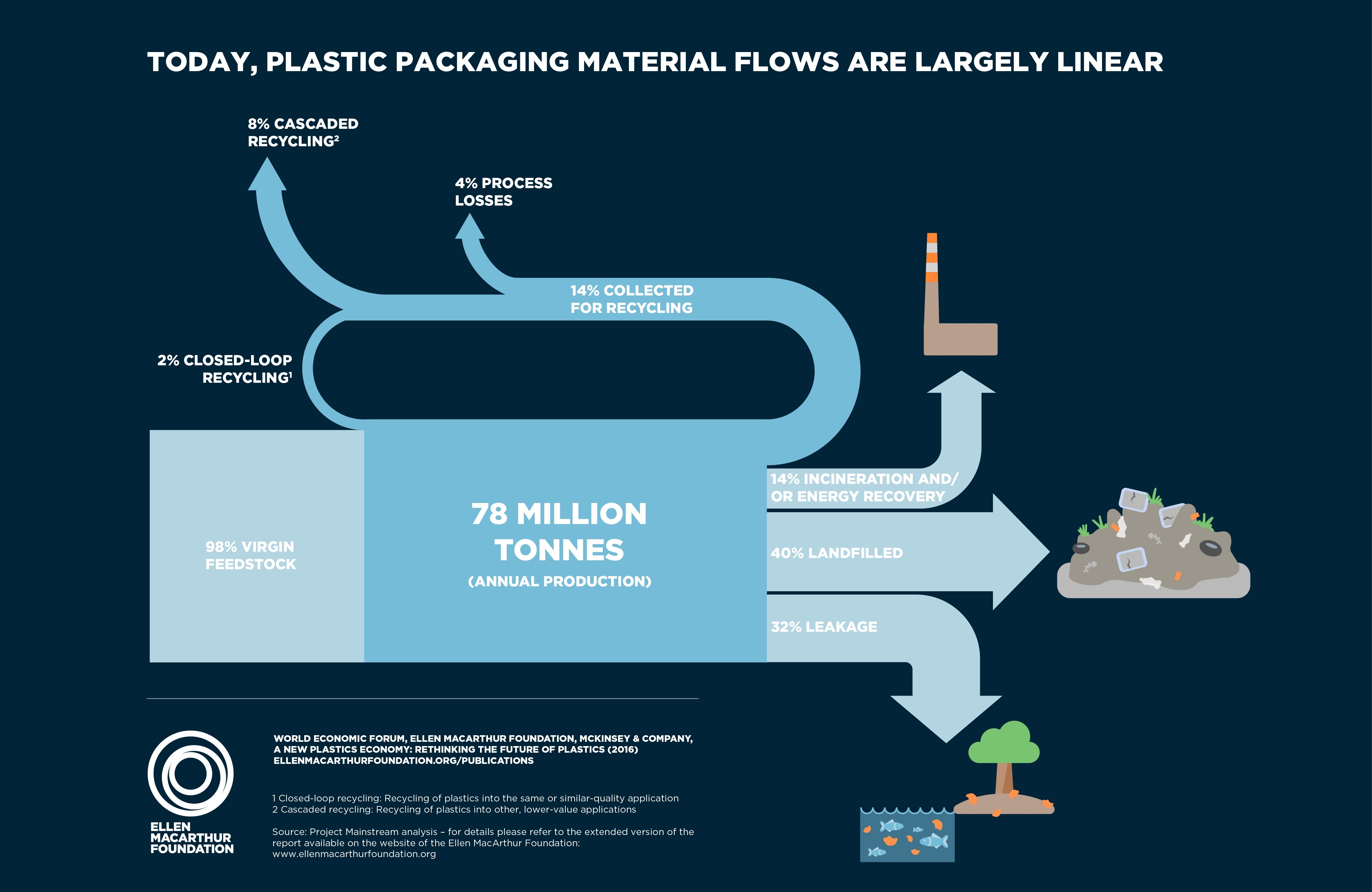
台灣需要的循環經濟(1) 比回收更有效的綠色產品規劃
Jun 09. 2023
您知道台灣有多少的資源仰賴進口嗎?
您知道有比資源回收更有效並幫助環境不被破壞的方法嗎?
身為台灣品牌的一員「mittag jewelry」一直致力於永續環境議題的提倡,並希望將此綠色環保觀念落實在mittag的商品、服務與員工訓練裡,成為台灣「綠色帶路人」的一員。因為,我們腳下的這片土地-台灣,一直是一個自然資源相對貧瘠的島國,所以絕大部分的資源(約73.2%)都需要仰賴進口(如石油、天然氣、各類金屬等...),因此資源匱乏一直是台灣無法解決的大問題。那有什麼方法能夠有效地解決這個問題呢?有的,那就是「循環經濟(Circular Economy)」了。
最近,mittag jewelry有幸能夠參與由REnato Lab於2019年7月18日~10月13日所舉辦的一系列講座「Future is Now」,來進一步了解目前全球對於「循環經濟」的推行現況,除了期望能藉此機會將新的觀念注入mittag品牌以外,更希望能提供真正關懷環境的「綠色商品」給您。現在,就由小編藉由這篇文章向您介紹什麼是循環經濟,和為什麼台灣需要推動循環經濟。

台灣從「線性經濟」到「回收經濟」的努力
還記得早期台灣各地掩埋場因不敷使用而造成滿坑滿谷的垃圾嗎?
還記得數十年前民眾對不滿建設新掩埋場而抗議不斷的畫面嗎?
其實,這些上述的往日記憶都是因為線性經濟(Linear Economy)所帶來的環境問題,因為在那時缺乏環保觀念的年代,人們對於使用過後或損壞的物品都只有直接丟棄的一個處理方法。但是20年來,台灣已將回收經濟(Recycling Economy)落實在我們生活,從垃圾分類讓可用的資源能夠有效回收,到家用垃圾隨袋徵收垃圾清潔費讓家用垃圾產量能夠有效降低,2002年起開始推動塑膠袋減量政策與在2019年開始實施的禁用塑膠吸管等的措施都是台灣對於環保議題所做的努力。現在,我們已經晉升為高資源回收率的國家,甚至在全球排名中僅次於德國而位居世界第二名;以實際的數字來說,20年前,台灣民眾每天製造的垃圾量為1.14公斤,而現在已降至0.4公斤,而垃圾掩埋量也占總廢棄物量不到2%。另外值得一提的,是工業廢棄物回收率也達到80%的傲人成績。這足以表示環保與回收經濟意識已經深植在您我的生活中了。
但是,您覺得這已經足夠了嗎?我們的環境真的因此變好了嗎?
慘忍的事實是,我們從一個提倡循環經濟(Circular Economy)的英國艾倫麥克阿瑟基金會(Ellen Macarthur Foundation)於2016年提出的"重新思考塑料的未來(Rethinking the future of plastics)"報告中以塑膠為例子中得知,全球的塑膠商品只有14%的原料來自於回收塑膠,而這些剩下的86%塑膠垃圾是到哪去了呢?據報告中得知,有14%的塑膠垃圾是以焚燒換取能源的方式被處理掉了,有40%的塑膠垃圾最終以掩埋方式處理,甚至有32%的塑膠垃圾持續散佈在環境當中。這些不同比例的塑膠廢棄物經過焚燒或時間的風化成為細小的塑膠微粒散播在空氣、土壤、地下水與大海中。而可想而知的是,在此環境裡孕育的生物勢必也受到污染,而人類身為地球食物鍊裡的最終掠食者,許多生物到最後都成為我們的餐桌上的食物,這些有害物質最終都進入了我們身體。「減少環境影響的最好辦法,不是更多的回收,而是更少的生產和處置。」 所以,真正的問題不是我們分類回收了多少垃圾,而是要想想如何維修、減少或是重複利用這些資源。因此,循環經濟(Circular Economy)的觀念開始迅速在全球蔓延。
資料來源:英國艾倫麥克阿瑟基金會
告別揮霍時代的新生活運動 循環經濟將改變世界

循環經濟是商品在還未製造之前,生產商就以「循環再使用」為前提來考量產品的材料、結構、製程甚至是商業銷售模式(小編會再另闢文章來介紹) 來有效地消除廢棄物與有毒的化學物質的使用。在此,您可能認為這不就是生產商應該做的工作嗎?實則不然,這背後還有政府法令規範再加上您我在購買時做出的投票選擇。如果我們在消費時多注意商品、包裝、企業經營方向是否符合循環經濟與永續環境考量,並且多支持、購買像這樣的商品,小編相信久而久之就會促使更多的廠商投入到這個議題裡來喔!
接下來,我們提供一段由英國艾倫麥克阿瑟基金會(Ellen Macarthur Foundation)所製做的「循環經濟(The Circular Economy)」短片讓您可以簡單的了解。也希望您能繼續閱讀mittag jewelry撰寫的其他有關循環經濟的文章"台灣需要的循環經濟(2) 「搖籃到搖籃」的綠色思維"和"台灣需要的循環經濟(3) 早已鳴槍起跑的「共享經濟」"。
資料來源:英國艾倫麥克阿瑟基金會
The circular economy that Taiwan needs (1) green product planning
by mittag jewelry
Do you know how much resources in Taiwan depending on importing?
Do you know that there are ways to be more effective than resource recycling and help the environment not be destroyed?
As a member of the Taiwanese brand, "mittag jewelry" has been committed to the promotion of sustainable environmental issues, and hopes to implement this green concept in mittag's products, services and staff training, and become a member of Taiwan's "green pilot". Because the land under our feet, Taiwan, has always been a relatively poor natural resource island, so most of the resources (about 73.2%) need to rely on imports (such as oil, natural gas, various metals, etc...) Therefore, the lack of resources has always been a big problem that Taiwan cannot solve. So is there any way to solve this problem effectively? Yes, that is the "Circular Economy".
Recently, mittag jewelry was fortunate to be able to participate in the REnato Lab’s a series of lectures, "Future is Now", held from July 18th to October 13th in 2019, to further understand the current global implementation of the "circular economy”. In addition to expecting to take this opportunity to implement new ideas into mittag brand, we do hope to provide you with a "green product" that truly cares for the environment. Now, we like to use this article to introduce you what is the circular economy and why Taiwan needs to promote a circular economy.

Taiwan's efforts from "linear economy" to "recycling economy"
Do you remember that in the early days in Taiwan, the landfills were filled with garbage?
Do you remember the people’s protests against the construction of new landfills decades ago?
In fact, these memories of the past were all due to the environmental problems brought by the “Linear Economy”, because in the era of lacking environmental protection concept at that time, people only have one choice which was to damp things that was used or damaged. However, in the past 20 years, Taiwan has implemented the “Recycling Economy” in our lives. From the waste sorting, the available resources can be effectively recycled. The household garbage was collected with the garbage cleaning fee to make the household waste output effectively reduced. The push for the reduction of plastic bags in 2002 and the ban on plastic straws in 2019, are all efforts by Taiwan on environmental issues. Now, we have been promoted to a country with high resource recycling rate, and even ranked second only behind Germany in the world. In actual terms, the amount of garbage produced by Taiwanese people was 1.14 kilograms per day, but now it has fallen to 0.4 kilograms, and landfills account for less than 2% of total waste. It is also worth mentioning that the industrial waste recycling rate has reached 80%. This is enough to show that the awareness of environmental protection and recycling economy has been deeply rooted in our life.
But do you think this is enough? Is our environment really getting better?
The cruel truth is that we learned from the "Rethinking the future of plastics" report in 2016 put forward by the Ellen Macarthur Foundation, which promotes the Circular Economy. Taking plastics for example shows that of the world's plastic products only 14% came from recycled plastics; and where did the remaining 86% of plastic waste go? According to the report, 14% of plastic waste was disposed of in the form of incineration for energy. 40% of plastic waste was disposed of in a buried manner, and even 32% of plastic waste was continuously distributed in the environment. These different proportions of plastic waste are burned or weathered into small plastic particles scattered in the air, soil, groundwater and the sea. It is conceivable that the creatures born in this environment are bound to be polluted, and human beings are the ultimate predators in the earth's food chain. Many creatures eventually become the food on our table. These harmful substances eventually all entered our bodies. "The best way to reduce environmental impact is not to recycle more, but to produce less." So the real question is not how much waste we recycle, but how to repair, reduce or reuse these resource. Therefore, the concept of Circular Economy began to spread rapidly around the world.
sourced from:Ellen Macarthur Foundation(UK)
Say goodbye to the era of squandering. The circular economy will change the world.

The circular economy is that before the product is manufactured, the manufacturer will consider the material, structure, production process and even the commercial sales model of the product on the premise of “recycle and reuse” (we will go further in other articles) to effectively eliminate waste and toxic chemicals. Here, you might think isn’t this the manufacturer’s job? In fact, there are government regulations behind and the voting options we made when we bought. If we pay more attention to the commodity, packaging, and if the corporate business direction is in line with the circular economy and sustainable environment considerations, and we can support and purchase more products like this, I believes that over time, more manufacturers will be putting this topic into consideration.
Next, we provide a short version of The Circular Economy by the Ellen Macarthur Foundation to make it easy for you to understand. We also hope that you can continue to read other articles on circular economy written by mittag jewelry "The circular economy that Taiwan needs (2) "cradle to cradle" and "The circular economy that Taiwan needs (3) "sharing economy".
sourced from:Ellen Macarthur Foundation(UK)
#CircularEconomy
#Cradletocradle
#Sharingeconomy
#REnatoLab
#EllenMacarthurFoundation



